Spruce Island is known as the home of St. Herman (1730 – 1837), the first Saint to be canonized on American soil by the Orthodox Church.
There are two monasteries on Spruce Island; St. Michael’s Skete and St. Nilus Skete are home to Russian Orthodox monks and nuns, respectively.

Saint Herman of Alaska was born in 1756 or 1760 in Serpukhov in the Moscow Diocese of Russia. He took the name Herman when tonsured a monk in the Trinity-Sergius Hermitage, near the Gulf of Finland, about 10 miles from St. Petersburg. He then transferred to the Valaam Monastery on the islands of Lake Ladoga. He was allowed later to live in the wilderness, a hermit alone in prayer, returning to the monastery only for the services of holy days.

In 1793, Father Herman, with Father (later, St.) Juvenaly and others, were chosen to do missionary work in Alaska. By zeal and the grace of God, they brought to the Faith several thousands of Native Alaskans. However, as time went by, the missionary party was slowly cut down. Some drowned in a ship at sea. Father Juvenaly was martyred at the hands of fearful Alaskans. Eventually, only Father Herman alone, of the original party, remained.

Father Herman settled on Spruce Island, and named it, “New Valaam,” in honor of his beloved Valaam Monastery. He dug a cave out of the ground with nothing but his hands, and lived there until a cell could be built, in which he then lived until his death. He grew his own food, not only for himself but for all he cared for, digging the earth, planting, carrying heavy loads of seaweed to fertilize the earth. He was a great ascetic; he was always barefoot even in these lands of the far North, and wore only a deerskin smock, a podrasnik and a patched rassa (inner and outer cassock), and his klobuk (monastic hat). He slept very little, and only on a wooden bench with no cushion, used bricks for a pillow, and covered himself with no blankets, but only a board.

He advocated for and defended the Aleuts against sometimes oppressive authorities. He cared lovingly and sacrificially for all who came to him, counseling and teaching them, and tirelessly nursing the sick. He especially loved children, for whom he often baked biscuits and cookies.
He was a great and compelling teacher, not only to Aleuts but also to highly educated and “free-thinking” Russians and Europeans who happened to travel there, and this humble monk humbled these “great ones” by his knowledge and wisdom, converting many to the true Faith. Often Aleuts were so captivated that they stayed up with him all night, not leaving until dawn.
The elder was given great spiritual gifts by God. He often foreknew the future, telling people of events that would happen many years later, and which were shown to have come true. By his prayers, God averted forest fires from crossing a line Father Herman made, and stopped a flood from rising past the position where Father Herman had placed an icon of the Mother of God and prayed.
Father Herman reposed in the Lord in his sleep on the 25th day of December (December 12th on the ancient Calendar of the Church), in 1837. He continued to work miracles after his death, answering the prayers of the faithful in intercession for them before God.
Holy St. Herman, pray to God for us.
Troparion in Tone IV:
O venerable Herman, ascetic of the northern wilderness and gracious advocate for all the world, teacher of the Orthodox Faith and good instructor of piety, adornment of Alaska and joy of all America: entreat Christ God, that He save our souls.
Kontakion in Tone VIII:
O beloved of the Mother of God, who received the tonsure at Valaam, new zealot of the struggles of the desert-dwellers of old: wielding prayer as a spear and shield, thou didst show thyself to be terrible to demons and pagan darkness. Wherefore, we cry out to the: O venerable Herman, entreat Christ God that our souls be saved!
For more reading about St. Herman:
THE LIFE OF ST HERMAN OF ALASKA
St. Herman of Alaska Wonderworker of All America
(A beautifully carved wooden reliquary in the Resurrection Church contains the coffin with Father Herman’s relics. On top of the reliquary are: a large icon of the saint (center); as well as the “paramon” cross and metal chains (on the left) that he wore (shown in the icon at the top); and his klobuk (monk’s hat) (in the glass box on the right). Also to be found at this church is Father Herman’s hand cross, which he is shown holding in the icon at the top}.



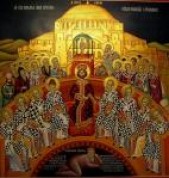 Christian Dogma
Christian Dogma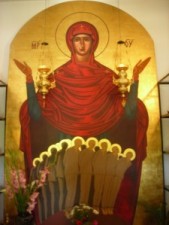 Christian Martyrs
Christian Martyrs Christian Orthodox Churches and Monasteries
Christian Orthodox Churches and Monasteries Christian Sermons and News
Christian Sermons and News Church's Teachings on Fasting
Church's Teachings on Fasting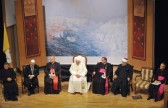 Ecumenism – a Great Heresy
Ecumenism – a Great Heresy Father George Calciu
Father George Calciu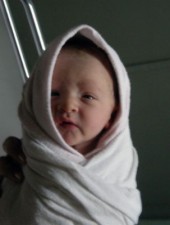 Life_a Sacred Gift form God
Life_a Sacred Gift form God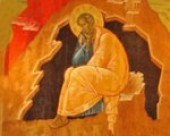 Orthodox Saints and Church Fathers
Orthodox Saints and Church Fathers Spiritual Elders
Spiritual Elders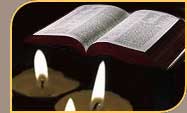 Daily Bible Readings
Daily Bible Readings Journey to Orthodoxy
Journey to Orthodoxy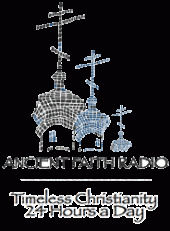 Listen to Ancient Faith Radio
Listen to Ancient Faith Radio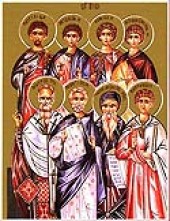 Orthodox Calendar of Feasts and Saints
Orthodox Calendar of Feasts and Saints Orthodox Christian Mission Center
Orthodox Christian Mission Center Orthodox Institute
Orthodox Institute OrthodoxChristianNetwork TV
OrthodoxChristianNetwork TV
5 comments
Comments feed for this article
January 6, 2010 at 1:51 AM
Reseller Hosting
Your blog keeps getting better and better! Your older articles are not as good as newer ones you have a lot more creativity and originality now keep it up!
July 19, 2010 at 10:29 AM
beachbody
I have found this cool orthodoxword.wordpress.com blog post ,and I should say to you thank you very much for giving this article to us.
January 27, 2011 at 10:36 PM
Nun Eisodia
I very much like the cross on St. Herman’s casket…is it possible to get a better image or a rubbing of it?
September 2, 2011 at 3:47 PM
MINUNATA FRATIE A PARINTILOR SERAFIM ROSE SI GHERMAN. Ce putere are ravna sincera si curata pentru Ortodoxie si ce inseamna fratietatea adevarata in Duh...
[…] în numele lui. Iată relatarea lui Gleb despre cum s-a realizat acest lucru: „Pe când mă aflam în Alaska, la locul Noului Valaam al Fericitului Gherman, am vrut să văd o icoană tradiţională cu el. Intrucât nu văzusem nici o icoană care să-l […]
September 30, 2016 at 2:54 PM
Saints of Recent Decades: St. Herman of Alaska (December 13 or 25) | Orthodox Christian Sunday Church School Teachers
[…] where he lived. See Spruce Island and watch some videos about St. Herman’s life at this site: https://orthodoxword.wordpress.com/2009/12/13/st-herman-of-alaska-and-spurce-island/ These videos would make great discussion starters for classes with older […]